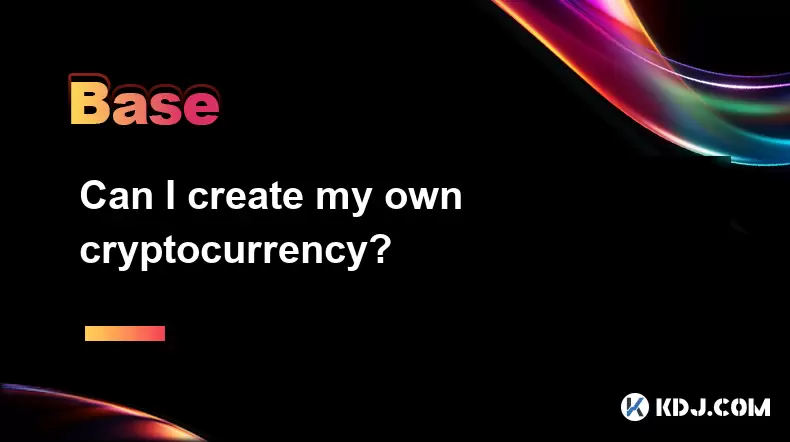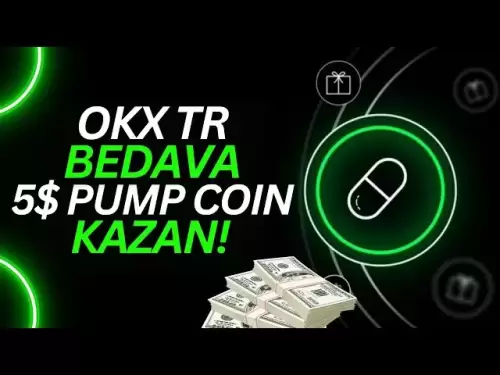-
 Bitcoin
Bitcoin $117400
-0.46% -
 Ethereum
Ethereum $3768
0.60% -
 XRP
XRP $3.551
2.09% -
 Tether USDt
Tether USDt $1.000
0.00% -
 Solana
Solana $203.2
11.30% -
 BNB
BNB $770.9
1.92% -
 USDC
USDC $0.9999
0.01% -
 Dogecoin
Dogecoin $0.2709
-0.02% -
 Cardano
Cardano $0.9024
4.49% -
 TRON
TRON $0.3139
0.60% -
 Hyperliquid
Hyperliquid $45.60
-1.41% -
 Stellar
Stellar $0.4730
-1.34% -
 Sui
Sui $4.025
2.15% -
 Chainlink
Chainlink $19.79
2.19% -
 Hedera
Hedera $0.2724
-2.39% -
 Avalanche
Avalanche $25.93
3.05% -
 Bitcoin Cash
Bitcoin Cash $524.0
-1.83% -
 Shiba Inu
Shiba Inu $0.00001558
0.50% -
 Litecoin
Litecoin $116.7
-0.30% -
 UNUS SED LEO
UNUS SED LEO $8.996
0.00% -
 Toncoin
Toncoin $3.334
1.83% -
 Polkadot
Polkadot $4.506
0.34% -
 Uniswap
Uniswap $10.99
4.83% -
 Ethena USDe
Ethena USDe $1.001
0.03% -
 Pepe
Pepe $0.00001461
3.17% -
 Monero
Monero $320.3
-1.01% -
 Bitget Token
Bitget Token $4.935
0.36% -
 Dai
Dai $0.9998
0.00% -
 Aave
Aave $322.4
-1.25% -
 Bittensor
Bittensor $455.6
9.33%
Can I create my own cryptocurrency?
You can create your own cryptocurrency by choosing between a blockchain-based coin or an existing-platform token, each with distinct technical and resource requirements.
Jul 20, 2025 at 11:49 pm

Understanding the Basics of Creating a Cryptocurrency
Yes, you can create your own cryptocurrency, but it involves a combination of technical knowledge, planning, and execution. Before diving into the process, it’s important to understand what type of cryptocurrency you want to build. Cryptocurrencies can be either coins or tokens. Coins, like Bitcoin or Litecoin, operate on their own blockchain, while tokens, such as ERC-20 tokens on Ethereum, are built on existing blockchains.
If you’re new to blockchain development, creating a token may be more feasible than building an entirely new blockchain. Tokens are easier to deploy and require less computational power and maintenance. However, if you have a unique use case that demands a custom blockchain, you’ll need to invest more time and resources into development.
Choosing Between a Coin and a Token
The first major decision is whether to create a coin or a token. If you're aiming for a coin, you’ll need to either fork an existing blockchain or build a new one from scratch. Forking is the more common approach, as seen with Bitcoin Cash and Litecoin, which are forks of Bitcoin.
If you're opting for a token, platforms like Ethereum, Binance Smart Chain, or Solana offer robust frameworks for deploying tokens. Ethereum’s ERC-20 and ERC-721 standards are widely used for fungible and non-fungible tokens, respectively. These standards ensure compatibility with wallets and exchanges.
Technical Requirements for Building a Coin
If you decide to create a new blockchain-based coin, here are the key steps you’ll need to follow:
- Choose a consensus mechanism: The most common are Proof of Work (PoW) and Proof of Stake (PoStake). PoW requires mining, while PoStake relies on validators who hold and lock up coins.
- Set up the blockchain architecture: This includes defining block structure, transaction validation, and network protocols.
- Create a wallet system: You’ll need to develop a wallet for users to store and transact your cryptocurrency.
- Launch a testnet: Before going live, test your blockchain on a testnet to identify bugs and vulnerabilities.
This approach requires deep technical expertise in blockchain development, cryptography, and network security. If you’re not a developer, consider hiring a team or using a blockchain creation platform like MultiChain or Algorand.
Creating a Token on an Existing Blockchain
For most individuals and small businesses, building a token on an existing blockchain is more practical. Here’s how to do it on the Ethereum network:
- Install MetaMask or another Ethereum wallet: This will allow you to interact with the Ethereum network.
- Get some ETH for gas fees: Deploying a token requires paying for computation on the Ethereum network.
- Use a token creation tool or smart contract: Tools like Remix IDE or platforms like TokenMint allow you to generate a token without coding.
- Deploy the token contract: This step involves sending the contract to the Ethereum network.
- Verify the contract on Etherscan: This ensures transparency and allows users to verify transactions.
Once deployed, your token will have a unique contract address, and you can distribute it via airdrops, sales, or other mechanisms.
Legal and Practical Considerations
Creating a cryptocurrency is not just a technical endeavor; it also has legal and regulatory implications. Depending on your jurisdiction, issuing a token or coin may be classified as offering a security, which requires compliance with financial regulations.
You should also think about marketing and adoption. Even if your token is technically sound, it won’t succeed without a community or use case. Consider the following:
- Whitepaper development: Clearly outline your token’s purpose, technology, and roadmap.
- Community building: Use forums, social media, and Discord to engage potential users.
- Exchange listing: Getting your token listed on exchanges increases liquidity and visibility.
Failure to plan for these aspects can result in a token that’s technically functional but practically useless.
Frequently Asked Questions
How much does it cost to create a cryptocurrency?
The cost varies widely. Creating a token on Ethereum can cost anywhere from $50 to $500 in gas fees, while building a custom blockchain may require tens of thousands of dollars in development and infrastructure.
Do I need to know how to code to create a cryptocurrency?
If you’re creating a token on an existing blockchain, tools are available that don’t require coding. However, building a coin or custom blockchain typically requires proficiency in programming languages like Solidity, C++, or Rust.
Can I mine my own cryptocurrency after creating it?
If your cryptocurrency uses a Proof of Work (PoW) consensus mechanism, yes, it can be mined. However, if it’s a Proof of Stake (PoS) coin, mining won’t apply—instead, users can stake their coins to validate transactions.
Is it possible to create a cryptocurrency without using blockchain?
No, by definition, a cryptocurrency requires a decentralized ledger technology like blockchain to function. Without a blockchain or similar system, it would not be a cryptocurrency but rather a digital currency or loyalty point system.
Disclaimer:info@kdj.com
The information provided is not trading advice. kdj.com does not assume any responsibility for any investments made based on the information provided in this article. Cryptocurrencies are highly volatile and it is highly recommended that you invest with caution after thorough research!
If you believe that the content used on this website infringes your copyright, please contact us immediately (info@kdj.com) and we will delete it promptly.
- MoonBull's Whitelist Mania: Your Last Shot at 100x Crypto Gains?
- 2025-07-22 10:30:12
- Meme Coins in 2025: Explosive Gains or Fading Fad?
- 2025-07-22 10:30:12
- Kim Keon-hee Crypto Probe: Scandal Rocks South Korea's Political Scene
- 2025-07-22 10:50:12
- ETH Holders in Profit: Value Surge Fuels Bullish Sentiment
- 2025-07-22 09:30:13
- NEAR Protocol's AI Leap: Double-Digit Gains and Future Potential
- 2025-07-22 09:30:13
- Cryptos, Meme Coins, Buy Now: Riding the Wave of Hype
- 2025-07-22 08:30:13
Related knowledge

What is the difference between CeFi and DeFi?
Jul 22,2025 at 12:28am
Understanding CeFi and DeFiIn the world of cryptocurrency, CeFi (Centralized Finance) and DeFi (Decentralized Finance) represent two distinct financia...

What is the difference between a sidechain and a Layer 2?
Jul 20,2025 at 11:35pm
Understanding the Concept of SidechainsA sidechain is a separate blockchain that runs parallel to the main blockchain, typically the mainnet of a cryp...

What is the Inter-Blockchain Communication Protocol (IBC)?
Jul 19,2025 at 10:43am
Understanding the Inter-Blockchain Communication Protocol (IBC)The Inter-Blockchain Communication Protocol (IBC) is a cross-chain communication protoc...

How does sharding improve scalability?
Jul 20,2025 at 01:21am
Understanding Sharding in BlockchainSharding is a database partitioning technique that is increasingly being adopted in blockchain technology to enhan...

What is the "crypto trilemma" of scalability, security, and decentralization?
Jul 19,2025 at 06:28pm
Understanding the Concept of the Crypto TrilemmaThe crypto trilemma refers to the challenge of simultaneously achieving scalability, security, and dec...

What is a cliff and vesting schedule in tokenomics?
Jul 20,2025 at 10:28am
What Does a Cliff Mean in Tokenomics?In tokenomics, a cliff refers to a specific period during which token holders are not allowed to access or transf...

What is the difference between CeFi and DeFi?
Jul 22,2025 at 12:28am
Understanding CeFi and DeFiIn the world of cryptocurrency, CeFi (Centralized Finance) and DeFi (Decentralized Finance) represent two distinct financia...

What is the difference between a sidechain and a Layer 2?
Jul 20,2025 at 11:35pm
Understanding the Concept of SidechainsA sidechain is a separate blockchain that runs parallel to the main blockchain, typically the mainnet of a cryp...

What is the Inter-Blockchain Communication Protocol (IBC)?
Jul 19,2025 at 10:43am
Understanding the Inter-Blockchain Communication Protocol (IBC)The Inter-Blockchain Communication Protocol (IBC) is a cross-chain communication protoc...

How does sharding improve scalability?
Jul 20,2025 at 01:21am
Understanding Sharding in BlockchainSharding is a database partitioning technique that is increasingly being adopted in blockchain technology to enhan...

What is the "crypto trilemma" of scalability, security, and decentralization?
Jul 19,2025 at 06:28pm
Understanding the Concept of the Crypto TrilemmaThe crypto trilemma refers to the challenge of simultaneously achieving scalability, security, and dec...

What is a cliff and vesting schedule in tokenomics?
Jul 20,2025 at 10:28am
What Does a Cliff Mean in Tokenomics?In tokenomics, a cliff refers to a specific period during which token holders are not allowed to access or transf...
See all articles

























































































